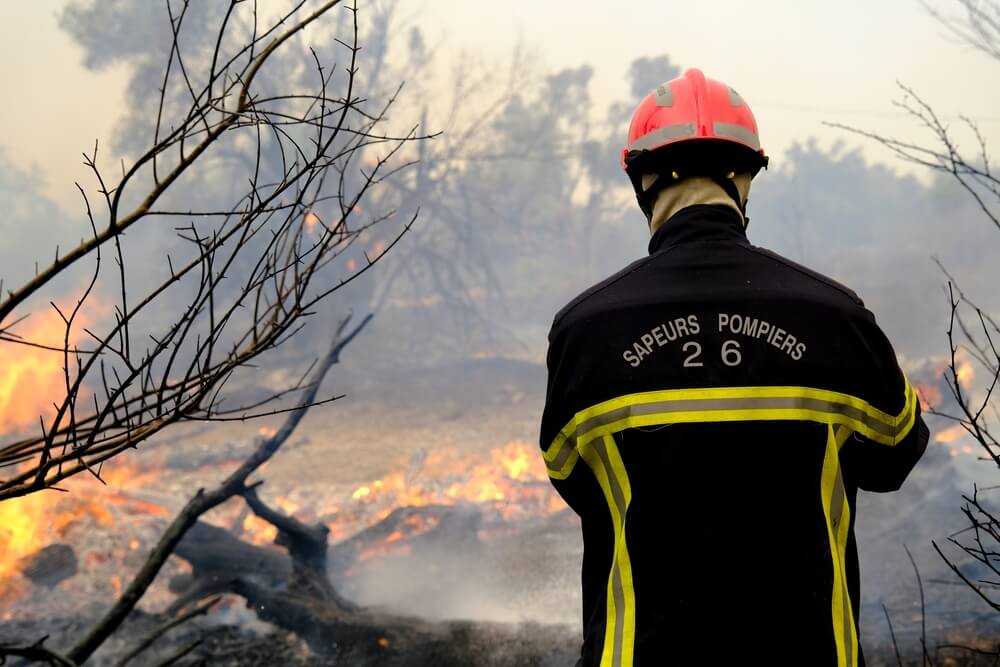A hole in the Antarctic ozone layer caused in part by man-made chlorofluorocarbons was confirmed in the mid-1980s with the help of scientists from the National Oceanic and Atmospheric Administration.
President Trump now plans to gut the agency’s entire scientific research division, one of the world’s top climate and weather hubs, as part of Washington’s dismissal of climate change as an issue lacking urgency, a stance echoed by populists in Europe.
From devastating fires to heat waves claiming the lives of thousands, global warming is being felt across North America and Europe this summer. But right-wing leaders rail against concerted climate action and seem content to let lower-income countries suffer alone.
Is it too late to change course? Or might enough countries group together without US participation to avert the worst predictions of climate disaster?
From promises to budget cuts
There is much to bolster the climate pessimists, who can point to Trump’s withdrawal from the UN Paris Agreement on the first day of his second US presidency, his failure to provide $4 billion to the UN’s Green Climate Fund, and massive cuts to USAID that have impacted climate projects globally.
Scott Bessent, US Treasury secretary, has urged the IMF and the World Bank to step back from their climate change agendas and move away from “distortionary climate finance targets” to focus on “dependable technologies that can sustain economic growth”.
Even catastrophic flooding in Texas that killed at least 120 people earlier this month failed to deter the US administration, whose budget proposal for next fiscal year includes big cuts to a federal programme that uses river gauges to predict floods.
Europe made grand promises in the European Green Deal to invest some 1 trillion euros to achieve net zero emissions by 2050
Staff and budget cuts are also planned at the Federal Emergency Management Agency, which deals with disaster response and recovery, and the National Weather Service, which forecasts dangerous weather.
The picture also looks bleak in Europe, which made grand promises in the European Green Deal to invest some 1 trillion euros to achieve net zero emissions by 2050.
Several governments are pushing back. Last month, Italy blocked EU legislation that would have forced companies to prove their products are eco-friendly.
Politicians in Germany and France are backing the auto industry to resist the EU’s pledge to phase out internal-combustion engines in new cars by 2035.
In the UK, opposition leaders see mileage in criticising the government’s “ideological” commitment to net zero.
Poland, meanwhile, has been given permission to redirect more than 6 billion euros towards defence spending. The money comes from unspent pandemic recovery funds that were originally supposed to be spent on the green transition.
Glimmers of hope
Many critics are worried about the diversion of funds from the climate crisis towards military spending in Europe, caused by Trump’s wavering stance towards Ukraine and Nato.
Last week in the Philippines at the board meeting of the Fund for Responding to Loss and Damage, developing nations called on rich countries to meet their unpaid pledges to help pay for the impacts of climate disasters.
The Fund says the developing world needs $580 billion in climate finance, but only $788 million has been pledged, while less than half of that amount - $361 million - has been deposited.
India reached its Paris Agreement target of 50% of non-fossil fuel power capacity
Nonetheless, there are some glimmers of hope. The Fund says it could approve its first projects as early as February next year. Such progress is a clear indicator of global solidarity toward climate action, says Ibrahima Cheikh Diong, executive director of the Fund, which was set in motion at the COP28 UN climate summit in 2023.
“The world largely answered the call for solidarity in the creation of the FRLD,” he wrote recently. “It is now up to us as a collective to deliver.”
Take Narendra Modi, prime minister of India. He enjoys cordial relations with Trump, but he is also pushing ahead with clean power. India announced this week it had reached its Paris Agreement target of 50% of non-fossil fuel power capacity, five years ahead of its 2030 pledge.
India is the world’s third-biggest carbon emitter, and it remains heavily reliant on coal for power generation, so there is much to be done, but the political will is there.
Much of the world seems to want to act
Regardless of populist calls to minimise the climate threat, the hard-headed world of finance is also forging ahead. Insurers are enjoying a record rate of sales of “catastrophe bonds,” which offload the growing risk from climate change on to investors who can gain high returns.
According to specialist data provider Artemis.bm, issuance of catastrophe bonds, which transfer part of the risk for events such as wildfires, hurricanes, and earthquakes to bondholders, has surged to $18.1 billion so far this year, compared with the previous record of $17.7 billion for the whole of 2024.
 Ten days of extreme heat killed 2,305 people in a sample of 12 European cities last month
Ten days of extreme heat killed 2,305 people in a sample of 12 European cities last month
Scientists continue to push for climate action. Ten days of extreme heat killed 2,305 people in a sample of 12 European cities last month, with almost two-thirds of those deaths caused by climate change’s intensifying effect on heatwaves, said new research released last week.
The research was compiled quickly compared with previous studies in an effort to garner publicity in the immediate aftermath of the heatwave when people are still thinking about it.
“These numbers represent real people who have lost their lives in the last days due to the extreme heat,” said Imperial College London climate scientist Friederike Otto.
Whether the publicity, along with the steps towards greater global solidarity, will be enough to avert a full-blown climate disaster remains unknown. But regardless of Trump, much of the world seems to want to act.